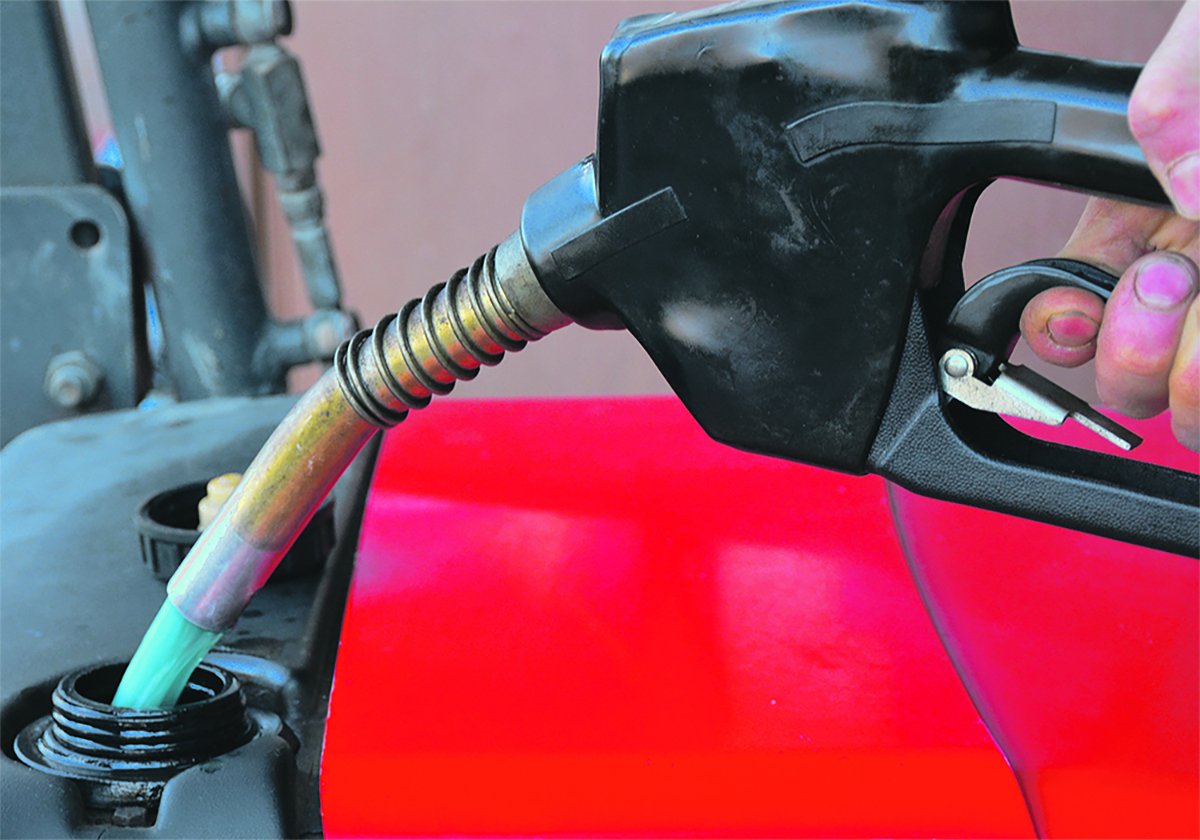Plugged system sparks frustration | The head of the prairie grain monitor says Canadian transportation more efficient
It’s unlikely that more Canadian grain will be exported through the United States this year, says a grain transportation expert.
Growers are frustrated with the lack of grain movement off their farms, and some have suggested in online agriculture discussion forums that Canadian shippers should be using U.S. rail lines and export terminals to get grain to market.
Mark Hemmes, president of Quorum Corp., the government appointed monitor of Canada’s prairie grain handling and transportation system, said a miniscule” amount of Canadian grain is shipped through the U.S., and that is unlikely to change.
Read Also

Alberta may eliminate marked fuel
Alberta may soon stop selling dyed gasoline and diesel.
“First and foremost is logistically it costs more,” he said.
The grain has to be shipped to the U.S. by a Canadian railway and then transferred to a U.S. railway to get to a port in the Pacific Northwest. As a result, grain has to travel on two railways instead of one and has further to go to reach port.
There are also additional ocean vessel costs. For instance, a ship picking up grain at the Port of Portland, Oregon, has to first be piloted down the Columbia River.
“Now you’ve got a day and a half worth of pilotage as opposed to three hours in Vancouver,” said Hemmes.
Vessel loading times at Vancouver are slightly better than those at Portland, but rail car unloading can be more efficient in the U.S.
Four of the grain terminals that operate in the Pacific Northwest feature a rail loop track unloading system, which allows for simultaneous unloading of four or five rail cars at once. Most terminals in Vancouver can unload only two cars at a time.
The U.S. terminals can unload a train in about eight hours compared to 12 hours in Vancouver.
However, Hemmes said overall it’s not even a close competition.
“From an economics point of view and an efficiency point of view, the first choice is always going to be to move it to a Canadian port,” he said.
“This is not national pride or anything, it is statistically proven that we’ve got a better system.”
Quorum doesn’t track how much Canadian grain moves south for export, but Hemmes estimates it is maybe one train a week compared to the 40 or 50 that arrive every week at Canada’s three main ports.
There has been lots of talk about the increasing role of shuttle trains south of the border. They are trains of 75 or more cars that move quickly back and forth from elevator to port. They cycle 2.5 to three times for every cycle of a non-shuttle train car.
The percentage of rail-hauled grain and oilseeds moved by shuttle trains increased to 49.5 percent in 2011 from 12.9 percent in 1994, according to the U.S. Department of Agriculture.
“The efficiency of shuttle trains benefits both the railroad and agricultural producers fortunate enough to be near shuttle-loading elevators,” said the USDA in an August 2013 report on shuttle train movement.
Hemmes said shuttle trains are referred to as unit trains in Canada, where the same trends are occurring. Seventy-seven percent of the grain that moves by rail in Canada is shipped in units of 50 or more cars.
The average turnaround time for a rail car has fallen to less than 15 days from 22 days when Quorum first started tracking statistics in 1999-2000.
“We’ve seen really good improvement in the efficiencies of the railways,” he said.
Farmers have not necessarily been the beneficiaries of those efficiencies. Railways have decreased capital investments because more efficient car use means fewer are required.
Some Canadian farmers look with envy at the U.S. grain handling system, but Hemmes is reluctant to compare the two because they are different markets.
“In Canada you have seen a lot of investment in on-farm storage, and in most market conditions it really provides an advantage to the producer,” he said.
This is not one of those years because grain prices are falling and elevators aren’t buying grain because the system is plugged.
CWB had a big influence on Canada’s grain handling system when it operated under the single desk, while the U.S. system was shaped in the 1940s and 1950s by government incentives that encouraged grain companies to build plenty of storage, buy grain from farmers and then hold it and hedge it.
Another major difference is that Canada exports far more of its grain than does the U.S.
“There’s so many differences between those markets that to compare one to the other and say that it makes more sense to follow the U.S. model, I wouldn’t subscribe to that,” said Hemmes.















